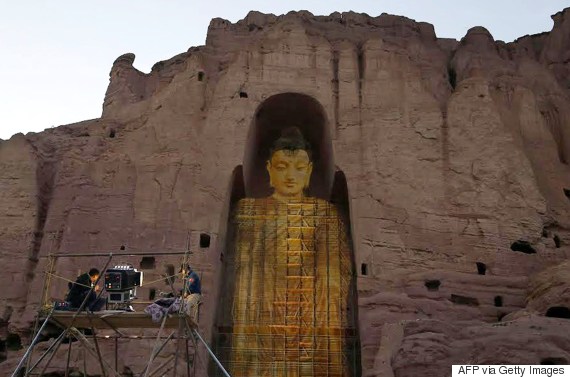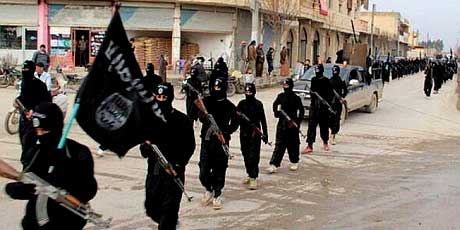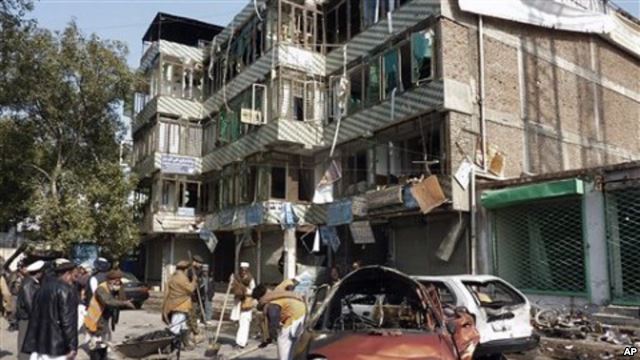ISIS heads towards Afghanistan
As ISIS enters Afghanistan, the people and its government face new challenges and threats to an already frail situation.
ISIS
Islamic State of Iraq and the Levant (ISIS) took over the al-Qaeda organisation, founded by Osama Bin Laden. Abu Bakr al-Baghdad who is also known as Abu Dua is the ISIS leader and has become the World’s most powerful jihadi leader.
ISIS seized control of Mosul, which is Iraq’s second-largest city. Their power base is in Raqqa which is in eastern Syria. According to energy expert Luay al-Khateeb, who spoke to CNN, ISIS are in control of more than half of Syria’s oil assets as well as a number of oil fields in Iraq. Al-Khateeb also explained that the oil is finding its way to the black market and could be making ISIS up to $3 million each day. The group has established to be more ruthless and more active at controlling the land it has held.
ISIS is under tight directions by top leaders to kill Shia Muslims and Christians whenever possible. The exact size of ISIS is unclear, people have travelled from around the World to join ISIS and fight in Syria and Iraq. Officials suggest that more than 11,000 people have joined and some have returned home. Research shows that, countries with bigger Muslim populations send the largest number of fighters.
ISIS in Afghanistan
It has been 15 years of the US invasion, which lead to the ousting of the Taliban in Afghanistan, but Afghanistan is still in a fragile state. It remains afflicted by Taliban attacks, long-lasting levels of corruption, political instability, and the economic uncertainty.
ISIS is spreading drastically from its main location to other countries. Recently the group found its way into the cities of Afghanistan. This could lead to a new wave of political and religious violence.
Afghanistan has a history of political violence in the name of Islam and a large number of religious extremist groups. In its decade-and-a-half long revolution, the Taliban failed to capture and keep major cities and district centres. In promising to work with ISIS, the Taliban aimed to get more supporters help, earn a bigger name and receive more funds. The rise of ISIS has encouraged extremists in Afghanistan to review and transmit their strategies in the direction of an imposing display of force.
But according to recent reports, the Taliban and ISIS have declared jihad against one another due to the fact that ISIS refused to work under the same flag. The Taliban’s deputy, Mullah Akhtar Mohammad Mansoor addressed a letter to ISIS leader Abu Bakr al-Baghdad, and said, “Jihad (Holy war) against the Americans and their allies must be conducted under one leadership.”
According to The Daily Beast, there are discussions between the Taliban and Iran on how to deal with the extremist group ISIS, as they are known.
Mullah Khan Muhammad Noorzai, an ex-Taliban spoke to The Daily Beast and said that the ISIS camp was attacked by the Taliban which lead to the death of innocent followers. In a phone interview, he said, “Most of those killed were our friends and colleagues.” Despite an agreement that the Taliban and ISIS would not attack each other, Taliban broke the agreement and attacked ISIS.
Noorzai said, “A Muslim won’t break a commitment, the Taliban are not true Muslims, and not mujahedeen (holy warriors) either. Now our jihad against the ignorant so-called Taliban will go on forever.”
According to Noorzai, the Taliban are fighting in the name of Islam but are funded by Iranians and United States. He said, “The Taliban shadow governor for Farah, through the mediation of Mullah Baz Muhammad, a local elder, swore an oath by Allah and the Quran that they would not attack ISIS, but they did.” He added that Iran played a key role in this.
ISIS attacks on Afghanistan
The Taliban and ISIS announced War on one another in April after the Taliban labelled ISIS self-declared caliphate and unlawful.
The first major ISIS attack was a suicide bombing in Afghanistan that killed at least 35 people dead and 100 people were wounded. The bombing happened outside of a bank branch in the Jalalabad city which is Afghanistan’s eastern Nangarhar province.
A spokesperson for a provincial governor, Ahmad Zia Abdulzai, described the attack and claimed that a suicide bomber on a motorcycle detonated a vest rigged with explosives in front of the state-run New Kabul Bank. Borhan Osman, who is an analyst with Afghanistan Analysts Network, tracked the emergence of ISIS in Afghanistan, “[Isis] has not built a solid, actual political presence in Afghanistan so far,” Osman said, “but if the Taliban quasi-monopoly is broken, that will help [it] to build networks and their brand.”
The president of Afghanistan, Ashraf Ghani said, “Who claimed responsibility for the horrific attack in Nangrahar today? The Taliban did not claim responsibility for the attack.” during his visit to northeastern province of Badakhshan
There have been several attacks since ISIS have entered Afghanistan. Most recently, at least 10 Taliban members were beheaded by ISIS. The attack happened in the eastern province of Nangrahar after ISIS jihadis stopped Taliban fighters from fleeing a gun battle with the government troops.
Ashraf Ghani talking about ISIS
The Buddha Statues have returned
The Buddha statues that were destroyed by the Taliban in Afghanistan have returned in the form of 3-D light projections.
The Taliban leader, Mullah Omar stated, in March 2001, that the statues were false idols. He stated that, “These idols have been gods of the infidels.” As an act of religious terror, the Taliban forces destroyed the Buddha statues, with the help of local workers, by blowing the statues down.
Both the statues were carved beautifully in cliffs and lay in rubble for more than a decade around 1,500 years ago. Statues are based in Bamiyan Valley which is a World Heritage Site.
The idea of the projections came from documentarians, Jason Yu and Liyan Hu. They were given permission to debut their work by UNESCO and the Afghan government.
Technology has increased in Afghanistan since the fall of the Taliban. TV’s are now working, electricy is available throughout the day and computers are used more than ever before. But the chance to see the Buddhas once again, via a projection, is by far one of the best. This allowed Afghans to see the giant Buddhas once again and to admire the beauty of the Buddhas again.
One of the men who participated in the attack stated that, “First they fired at the Buddhas with tanks and artillery shells. But when that was ineffective, they planted explosives to try to destroy them.” He also added, when the statues were taken down, the Taliban celebrated by dancing and slaughtered nine cows as sacrifice.
The 3-D light projections filled the cutouts in the mountains. According to The Atlantic, over 150 people watched the display.

Afghan females and a career in journalism
Women make up 1,500 of the Afghanistan’s 10,000 journalists. Threatened by the Taliban, risk of death, yet still they choose to work towards a career in journalism.
It is now clear to the world that life for women in Afghanistan was never easy, and the question that remains is, if it will ever be easy?
We can, without a doubt, say that females in Afghanistan dream of a career because after all, the women there are like any other woman in the world, with a dream. Afghanistan has seen a great interest of women working towards rebuilding the country.
There are now women politicians, drivers, teachers, doctors, singers, celebrities and businesswomen in Afghanistan. A huge improvement compared to the previous, dark, years of war.
Afghan Women are eager to take part in making Afghanistan a better place purely because of their passion and dreams to live a better life, and make the future brighter for their children and the future generations to come.
From my visits to Afghanistan, I have seen girls and boys going to school with a great interest in education. I recall waking up one morning and looking out of the window in my room, seeing children dressed in uniform heading towards school, Girls wearing white scarves and black dresses and the boys wearing blazers, shirts and trousers with polished shoes, cheerfully heading to school.
However, with the withdrawal of the troops and reduced aid to Afghanistan there is a very high risk of these gains and the achievements of Afghan women and men, which are already very fragile, to be reversed back as no one knows what the future holds for Afghanistan.
Fatimah, a young Afghan girl, aged 21, whom I met in Afghanistan, Jalalabad province, said that the Taliban are not the only reason that stops men and women from pursuing a career in journalism, but it is the lack of security in the country, and the unorganised policies in the countries laws.
She said, “I want a career in journalism, but the lack of security and the lack of protection for journalists in Afghanistan stops me. My family, especially my father is against my decision, he is not permitting me to work towards the career in journalism because he fears losing me.”
Palwasha Tokhi
On September 16th, young female journalist, known as Palwasha Tokhi, who worked for Bayan, a local radio in northern Balkh province, was killed inside her home.
Palwasha Tokhi studied and completed her Masters degree in Thailand, two months before she was killed.
She was taken to the Mazar-e-Sharif hospital after being stabbed by unknown men. Mohammad Khalil Tokhi, her father, said the men broke into their home when he was not there, stabbed Palwasha and then fled. Tokhi was the second radio journalist killed in Mazar-e-Sharif.
There were claims that Palwasha had been killed because she worked for the German military and it was thought she had links with them.
Tokhi’s former colleague said, “The insurgents tell people that those who work for the West are promoting Christianity in Afghanistan and are against Islam.”
Her murder is still a mystery and no one has found her killers. This raises the question, if the Afghan police/government are trying hard enough to bring those who commit crimes, such as killings of journalist, to justice.
http://www.dw.de/natos-afghan-employees-fear-for-their-lives/a-17933478
https://fascinatingmystery.wordpress.com/2014/10/24/saint-of-the-week-palwasha-tokhi/



















